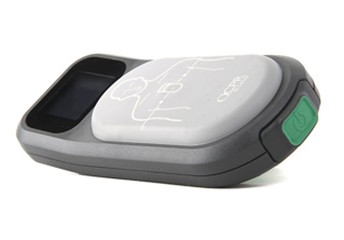- Products >> CPR - CPR_D Training Products>> CPRmeter®


CPRmeter
Quality CPR matters
The trained rescuer knows that when faced with a sudden cardiac arrest patient, time and optimal therapy is critical for survival. Quality CPR combined with early defibrillation is essential to improve survival. Guidelines provide direction on a number of parameters that define Quality CPR. However, the challenge for all emergency healthcare providers remains:

Patients Vary
Guidelines recommend compressing the patients’ chest at least 4 - 5 cm. This in itself is hard to judge by rescuers, and made even harder because the required compression force on individual patients’ chests varies greatly. In fact, Tomlinson et al (2007) showed that patients’ chests require a compression force ranging from 10 - 55 kg force to reach the minimum compression depth.
How does CPRmeter™ work?
CPRmeter™ has two embedded sensors: one measuring acceleration and another measuring force. A sophisticated microprocessor continuously measures both of these parameters during each compression, and special algorithms convert the collected data into meaningful information.
The accelerometer measures the depth and rate of chest wall movement during each compression and converts it into distance travelled. The force sensor measures the force applied during CPR and is used for several purposes, the most important being to detect that pressure is not fully released between compressions i.e. provide feedback if the responder is leaning during CPR. This helps the trained rescuer to deliver guidelines compliant chest compressions regardless of the chest stiffness of an individual patient.
Its rugged construction and excellent viewing angles, even in difficult environmental conditions, makes CPRmeter ideally suited to the chaos of the emergency situation.
Useful docs about the product
Relative Links
Compare Similar Products
Product Number:
801-00140 CPRmeter™
Accesories:
801-10150 Red Sleeve
801-10550 Rugged Carry Case
Consumables:
801-10850 Patient Adhesives

 36 Α Taxiarchon Str, Kalamaki
36 Α Taxiarchon Str, Kalamaki
